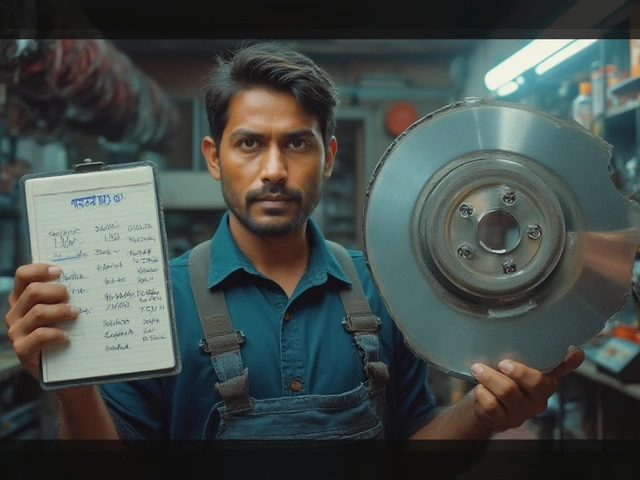
Front Brake Pads: Signs of Wear, Replacement Costs, and What You Need to Know
When your car slows down, it’s the front brake pads, the friction components that press against the rotors to stop your vehicle. Also known as brake lining, they take the brunt of stopping power—up to 70% of your car’s braking force happens at the front. That’s why they wear out faster than rear pads, and why ignoring them can turn a simple repair into a dangerous or expensive mess.
Bad brake pads, the replaceable friction material attached to the brake caliper don’t just squeal—they cause uneven rotor wear, reduced stopping distance, and even brake fluid leaks if metal grinds on metal. If you hear a high-pitched screech, feel vibration in the pedal, or notice your car takes longer to stop, your front brake pads are likely worn thin. Most last between 30,000 and 70,000 miles, but aggressive driving, heavy loads, or city traffic can cut that in half.
Replacing brake pads, the friction material that contacts the rotor during braking isn’t rocket science, but it’s not a job to delay. A full set of front brake pads costs anywhere from $100 to $300 in parts, depending on quality and material—ceramic pads last longer and are quieter, while organic pads are cheaper but wear faster. Labor adds another $80 to $150, but many shops offer package deals that include rotor inspection or resurfacing. Skip the cheap pads—they might save you money now, but they’ll cost you in safety and rotor damage later.
What you’ll find below are real, practical posts from drivers who’ve been there. You’ll learn how to spot worn brake pads before they fail, what the actual costs look like in 2025, and why some brake noises are harmless while others mean trouble. No fluff, no theory—just what works on Indian roads, with real examples and clear advice. Whether you’re checking your own pads or getting quotes from a shop, this collection gives you the facts to avoid being overcharged or caught off guard.
-
13 May






